How to winterize a greenhouse – 6 steps to get ready for the cold weather
Once you know how to winterize a greenhouse, you can ensure that your garden will survive throughout the coldest months
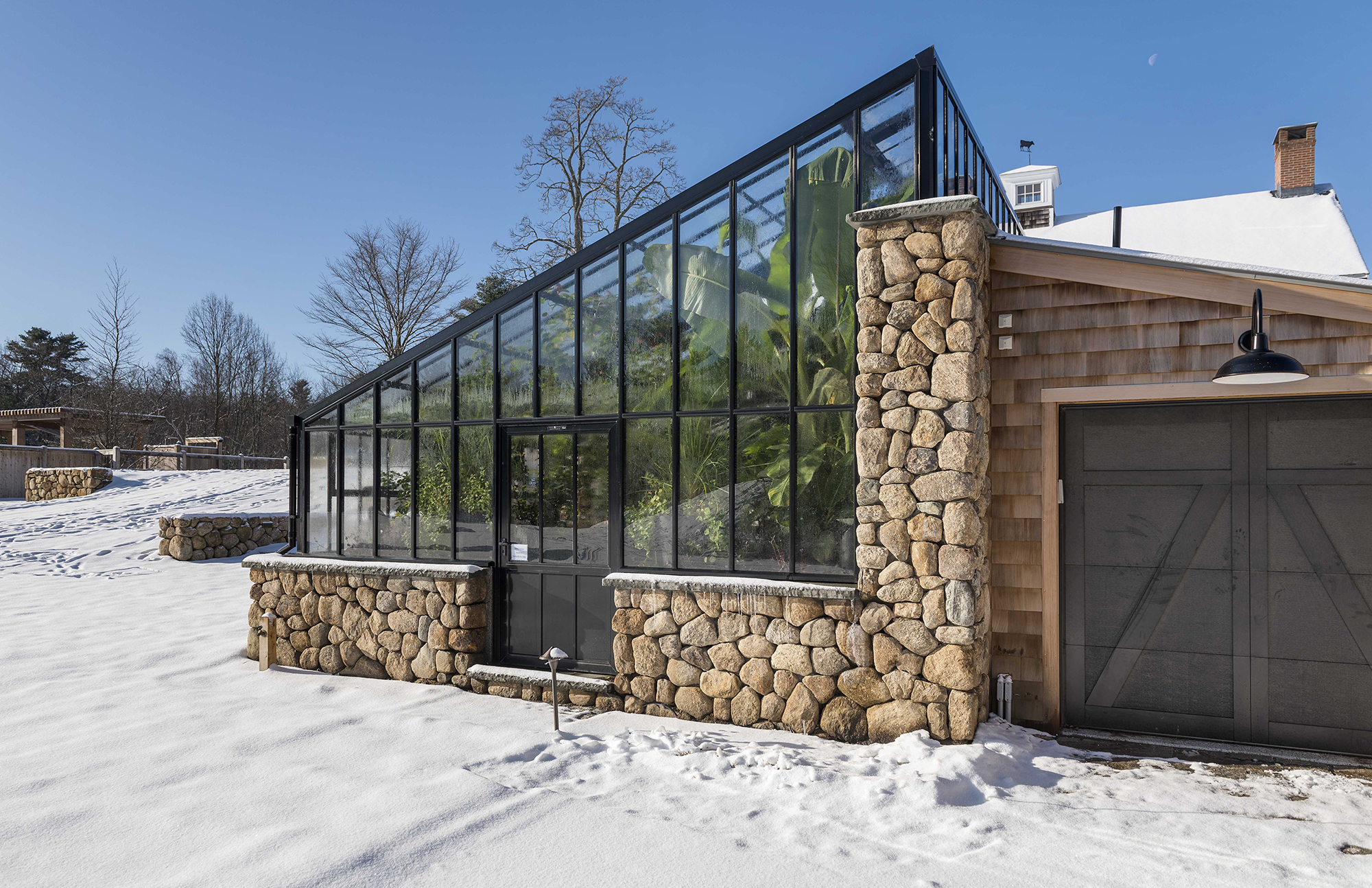

Knowing how to winterize a greenhouse is the secret to getting the most from your garden all year round. Not only will winterizing a greenhouse get the space ready for spring but it will also enable you to keep growing fruit and vegetables through the coldest months of the year.
When you start researching greenhouse ideas your thoughts will be of summer abundance and autumn bounties, and it is unlikely that you will give a second thought to the colder winter months. However, learning how to winterize a greenhouse is a must – after all, the space between growing seasons is essential to regroup and get ahead for the following year.
How to winterize a greenhouse
When planning a greenhouse be sure to give a thought to how it will operate in winter. 'If you have got the space for a substantial sized greenhouse – 30 sq meters minimum – you can place a growing bed in the center and produce a very impressive crop during the winter months, such as growing potatoes or carrots,’ explains Chris Sawyer, strategic director at greenhouse manufacturer Alitex.
However, even if you only have a small greenhouse, knowing how to winterize a greenhouse will help you to keep the space productive during the coldest months and will provide invaluable when it comes to overwintering tender perennials.
1. Deep clean your greenhouse
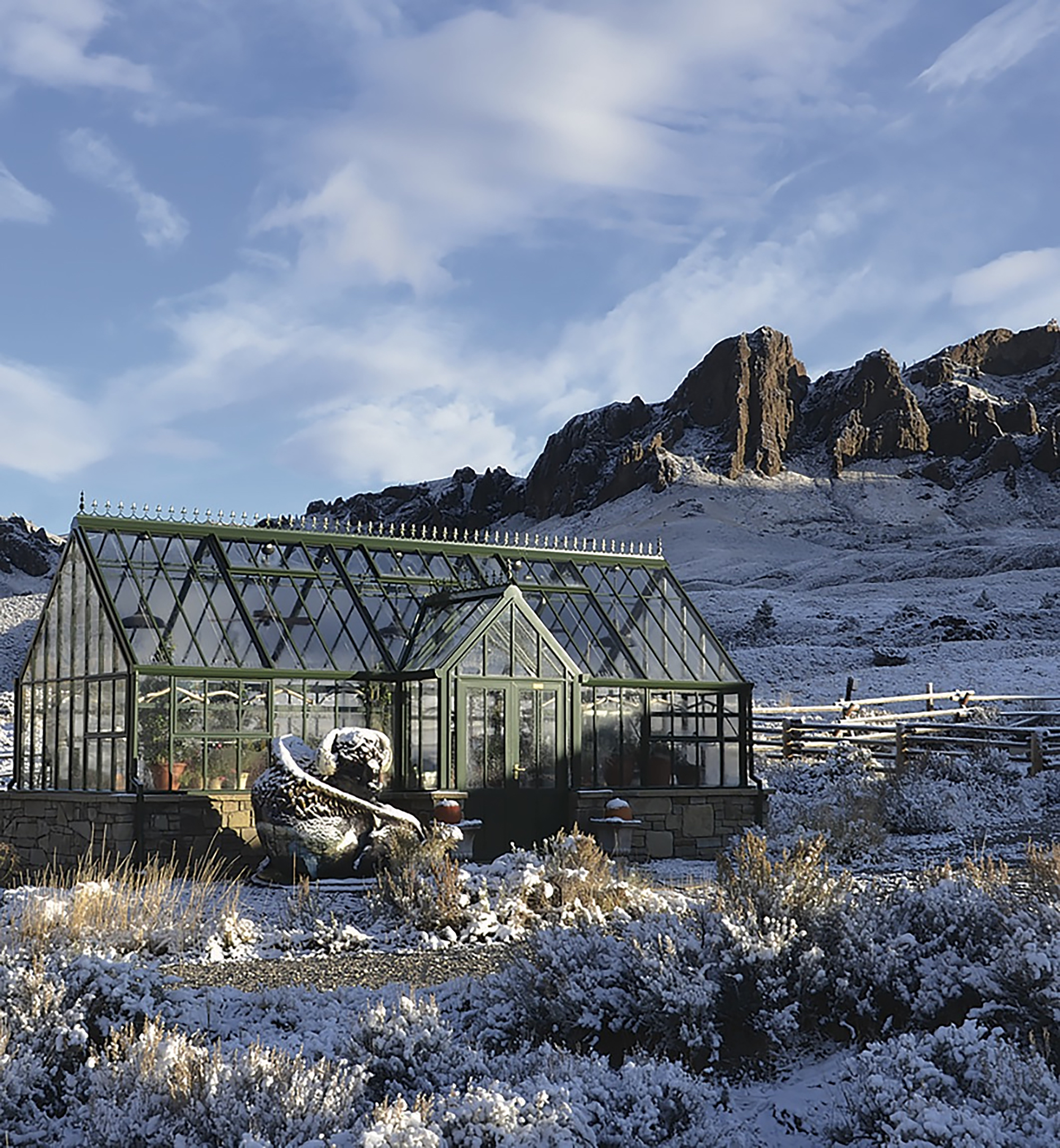
The first step to winterizing a greenhouse is a deep clean and a declutter. Start by emptying everything out of the greenhouse and then grab the brush and sweep away any debris.
'Sweep the floors and benches and thoroughly clean with warm, soapy water and disinfectant protecting your surfaces from disease and pests, not forgetting your tools too!' advises Daniel Carruthers from Cultivar Greenhouses. 'Cleaning the exterior of your greenhouse is just as important as the inside, so start by checking the gutters and remove any leaves that may have become clogged. This will help avoid blockages and ensure water flows freely to the drains. Give the glass a good clean too, as this will allow maximum sunlight to reach your plants and crops in the darker days that lie ahead.'
If you have beds in your greenhouse, these will also need some TLC. Remove any plants that have completed their growing period and add them to the compost heap. 'Dig over the borders where the tomato, pepper, and aubergine crops were growing and remove all weeds. A light treatment on a pelleted fertilizer, raked into the soil and watered, will ensure the beds are in good order in time for planting next season,' adds Linda Lane, managing director of Griffin Glasshouses.
2. Declutter your greenhouse

During summer, when gardening is at its most busy – it's likely that your greenhouse has become somewhat of a dumping ground for unused pots, random tools, and even stray plants. Now is the time to get it ship-shaped for next spring.
'Sort and stack empty pots, and ensure all of your plant labels are neatly stored away for next season. If you don’t plan on using all your shelves during autumn, these can be collapsed down to make more floor space for storing items such as tools and pots. Split your greenhouse into zones for maximum organization, having separate areas for potting materials, tools, storage, and plants, giving consideration for the growing conditions your plants prefer,' advises Daniel Carruthers from Cultivar Greenhouses. 'If you’re planning on heating your greenhouse during the cooler months, you will need to allocate enough space for a heater, allowing for maximum airflow.'
If you are looking to maximize your garden storage, consider adding one of these shed ideas which will remove the need to store your tools and pots in your greenhouse. There are also lots of shed organization and shed storage ideas to help you keep everything neat and tidy.
3. Think about heating and lighting

Cold and dark are the main challenges the garden faces over winter, and at the same time, these two factors are the most important to the survival of plants. Therefore, you may find it necessary to supplement the heat and light that your plants receive.
'Heating your greenhouse will help you to grow more in winter than an unheated one. Fortunately, just adding enough heating to prevent the temperature from ever dropping below freezing enables many crops to survive. Greenhouse heating needn’t be costly and systems range from providing background warmth against frost to constant heating,' explains Tom Barry, CEO at Hartley Botanic.
'One of the most economical heating systems is simply to warm soil, either in a bed, or propagation bench. Soil-warming cable provides heat where it is most needed, at the roots, so even if top growth is cold-damaged, the roots will survive. The cable is safe and easy to install and, with a thermostat, lets you control soil temperature more accurately. Its performance depends on the cable type, prevailing temperatures, and how the system is installed, e.g. a 6m cable consumes 75 watts and correctly installed will sustain temperatures between 59°F and 77°F per square meter of the covered bench. Cover plants with fleece or a canopy of translucent sheeting to retain heat.'
However, heating is only half of the battle. 'Don’t forget that it’s often low light, rather than the cold, which is the biggest hindrance to plant growth. Recently developed LED daylight lighting units are a tremendous benefit, the extra light is exactly what plants need during the darkest days. And the cost of buying and running these is much less than older units, making them even more valuable. (Plus, they will be more helpful in spring when their extra light produces much better seedlings),' adds Tom Barry from Hartley Botanic.
4. Turn off and insulate water outlets
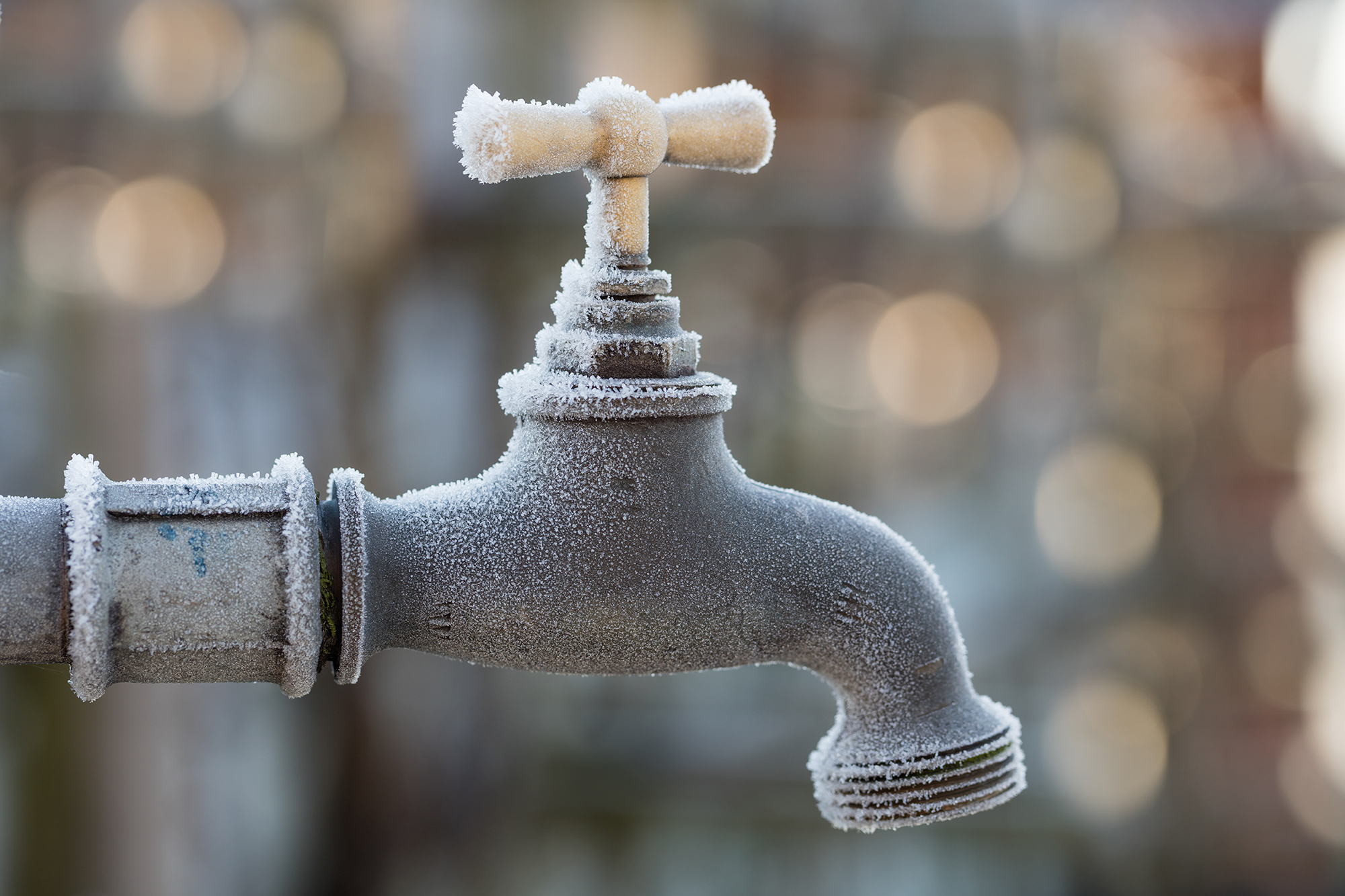
Turning off and insulating water outlets is good practice whether you have a greenhouse or not – should your outdoor faucet freeze, it can do serious damage to your home's plumbing. Therefore, learning how to protect an outside faucet from freezing is an essential bit of garden knowledge that can save you a lot of time and money in the future.
5. Insulate your greenhouse
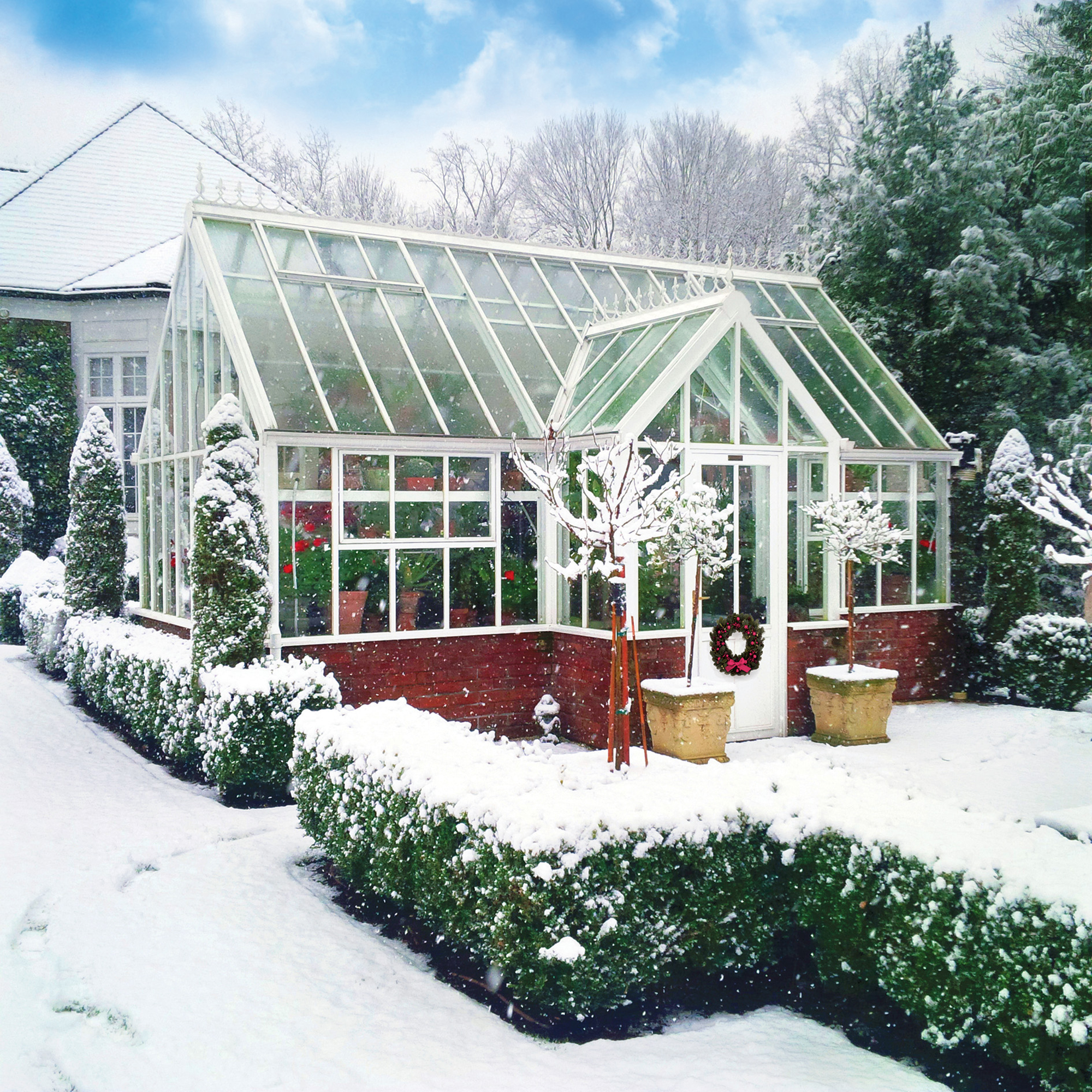
Some greenhouses have electric heating to keep them at an ambient temperature throughout the colder months, while others rely on insulation.
'If you insulate your greenhouse, the best time to do this is after the clean-up and before any tender plants are brought in for their winter siesta. But make sure the glass is clean before putting up your insulation,' says Linda Lane, managing director of Griffin Glasshouses.
Insulating your greenhouse doesn't need to be expensive. Layers of bubble wrap over the glass panes can make the difference between your plants making it through winter or not.
Alternatively, you can insulate the plants themselves, covering the soil with a layer of bubble wrap or opting for cloches – whether purchased or homemade – can be a cost-effective way to keep a small number of plants warm.
6. Add plants that need protection
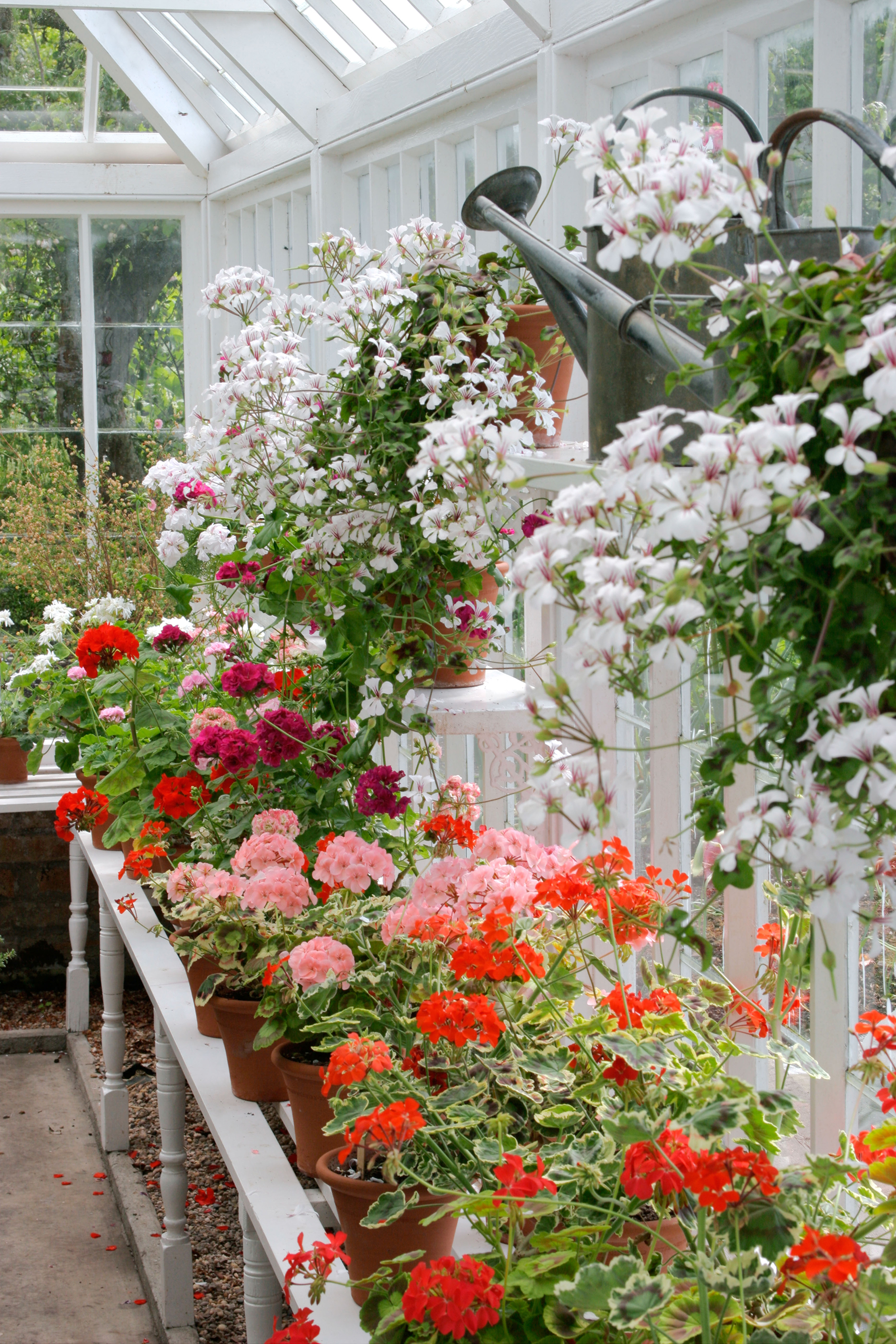
Once you've winterized your greenhouse, it is time to add the plants – this is a great way to protect plants from frost. If you're unsure what plants to winterize in your greenhouse then start by looking at your tender perennials. These plants can not survive a frost of any description. Popular tender perennials include begonias, geraniums, and salvias. Learn how to overwinter geraniums and begonias with our expert guides. You can also use your greenhouse to store bulbs and tubers that will not survive a frost – these include dahlias. Discover how to overwinter dahlias in our dedicated guide.
You can also use your greenhouse to prolong the growing season well into winter. 'Greenhouses can produce many crops for eating fresh throughout winter. Even tender summer edibles: cucumbers, tomatoes, peppers, and aubergines, can grow for many weeks undercover. Most herbs can also be grown under cover through winter, so it’s worth potting extra for this purpose, even hardy ones as their foliage remains softer and more aromatic. Thyme, parsley, mint, and chives are always useful,' says Tom Barry from Hartley Botanic.
How do you overwinter an unheated greenhouse?
You can overwinter an unheated greenhouse by decluttering, thoroughly cleaning, and then insulating with bubblewrap and cloches. Not only will these steps help you to get your greenhouse ready for spring but they will also help more tender perennials to survive the worst of the winter weather.
Does a greenhouse need to be heated in the winter?
No, a greenhouse doesn't have to be heated in the winter. In fact, placing your greenhouse in a sunny position and insulating thoroughly with specific sheets or bubble wrap will make a significant difference to the temperature of your greenhouse.
Sign up to the Homes & Gardens newsletter
Design expertise in your inbox – from inspiring decorating ideas and beautiful celebrity homes to practical gardening advice and shopping round-ups.

Having graduated with a first class degree in English Literature, Holly started her career as a features writer and sub-editor at Period Living magazine, Homes & Gardens' sister title. Working on Period Living brought with it insight into the complexities of owning and caring for period homes, from interior decorating through to choosing the right windows and the challenges of extending. This has led to a passion for traditional interiors, particularly the country-look. Writing for the Homes & Gardens website as a content editor, alongside regular features for Period Living and Country Homes & Interiors magazines, has enabled her to broaden her writing to incorporate her interests in gardening, wildlife and nature.
-
 Miley Cyrus breaks a cardinal decorating rule with her 'floating table' – her unexpected layout transforms a dead space into a stylish breakfast area
Miley Cyrus breaks a cardinal decorating rule with her 'floating table' – her unexpected layout transforms a dead space into a stylish breakfast areaThe singer tosses aside the maxim that furniture shouldn't be floating in the middle of the room with an innovative kitchen layout
By Sophie Edwards Published
-
 It’s a concept straight out of a fashionista's playbook, but I used the Sandwich Method to organize my kitchen shelves – it’s never looked sleeker
It’s a concept straight out of a fashionista's playbook, but I used the Sandwich Method to organize my kitchen shelves – it’s never looked sleekerIt transformed messy to mesmerizing in a matter of seconds
By Punteha van Terheyden Published